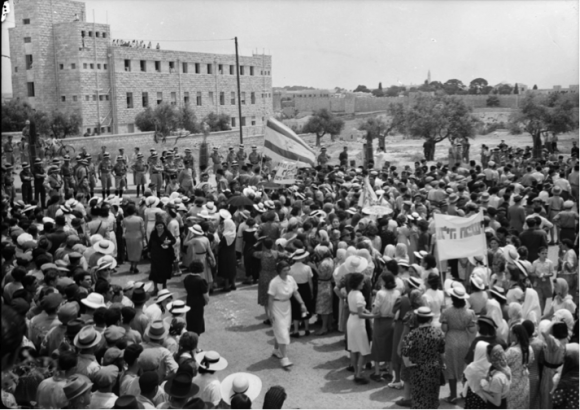To this end, they appointed Sir John Woodhead to lead the Woodhead Commission in March 1938. They were instructed to gather evidence from the various parties and propose a detailed partition scheme for Mandatory Palestine including specifying the partition boundaries and examining the economic and financial aspects of the Peel report. The commission spent over three months in Palestine gathering evidence from witnesses in 55 sessions.
On November 9, 1938, the Woodhead Commission published its conclusions. They recommended against the Peel Commission’s plan as it would involve overwhelming political, administrative, and financial difficulties. One point had angered the Arab world; the commission found that a self-supporting Arab state could only be established if it contained a large number of Jews to contribute to the tax revenue in order to balance the state’s budget. Arabs were tribal and held no loyalty to a broader administration, rather each community was loyal to itself and therefore, the commission assessed that there would not be cooperation between the various Arab communities leading to a lack of revenue from tax collections and gross domestic product. The conclusion was that in order to create a viable economic entity, it was necessary to have an educated and disciplined Jewish presence in government and citizenry who would make up the primary source of tax revenue.
In their report, they provided three possible modifications and alternatives to the Peel Commission proposal: Plan A, Plan B, and Plan C. The report questioned the economic and political viability of partition and suggested that the two new states remain in a union with the British government. The plans proposed the creation of a Jewish state surrounded by a larger Arab state and a British zone. These recommendations drastically reduced the land area of the Jewish state and limited the sovereignty of both proposed states.
Both the Arabs and the Jews rejected these proposals and, thus, seeking to find a solution that was acceptable to both parties, the British announced the impracticality of partitioning the land and called for a conference in London to work out a compromise. The parties met at the St. James Round Table Conference which took place in February and March 1939. The biggest influence in the conference, however, had nothing to do with Palestine, Arabs or Jews, rather it was Germany. As the conference was commencing, Germany invaded Czechoslovakia. Prior to that, British Prime Minister Neville Chamberlain had met with Hitler to discuss Czech forces massacring ethnic Germans in the Sudetenland, a region in Bavaria, and said he was going to stop it. England gave the green light after Prime Minister Chamberlain assured England and Europe that Adolph Hitler had no designs on war.
Hitler, however, went beyond Bavaria and into Czechoslovakia making Chamberlain look foolish and putting Europe on edge. This development shocked The London conference which ultimately ended in a deadlock where no agreement was reached. For the British government to enhance its security and improve its position with Arab states who they feared would align themselves with Germany, they issued a White Paper in May 1939 which yielded to Arab demands.
The 1939 White Paper broke from the earlier Balfour Declaration by stating that the Jewish national home should be established within an independent Palestinian Arab state, thus making Jews subjects of Arab rule and forcing upon them a jizya, a tax for non-muslims, that would serve to alleviate financial concerns the British had about an Arab led state. It also limited Jewish immigration within the next five years during World War II.


